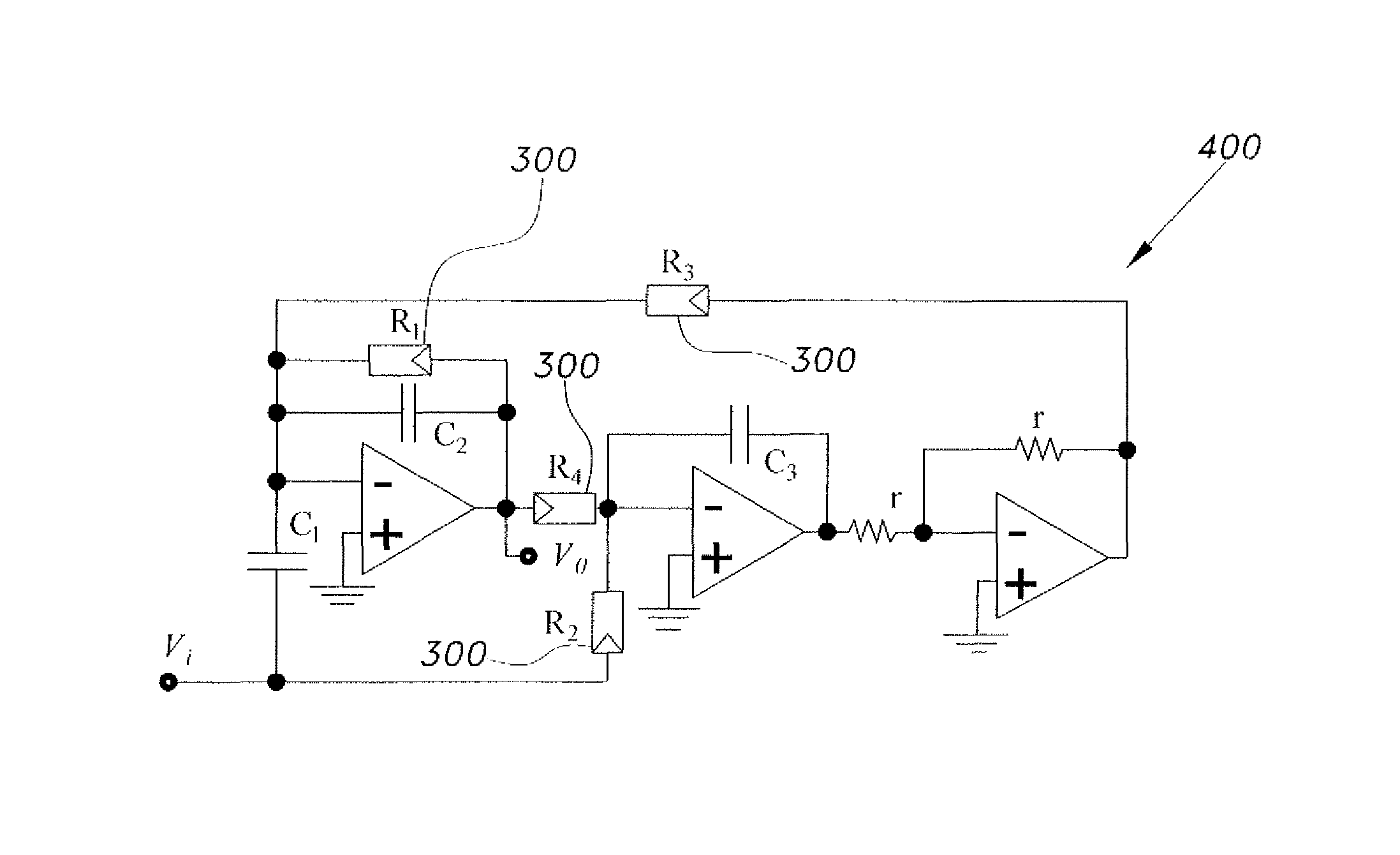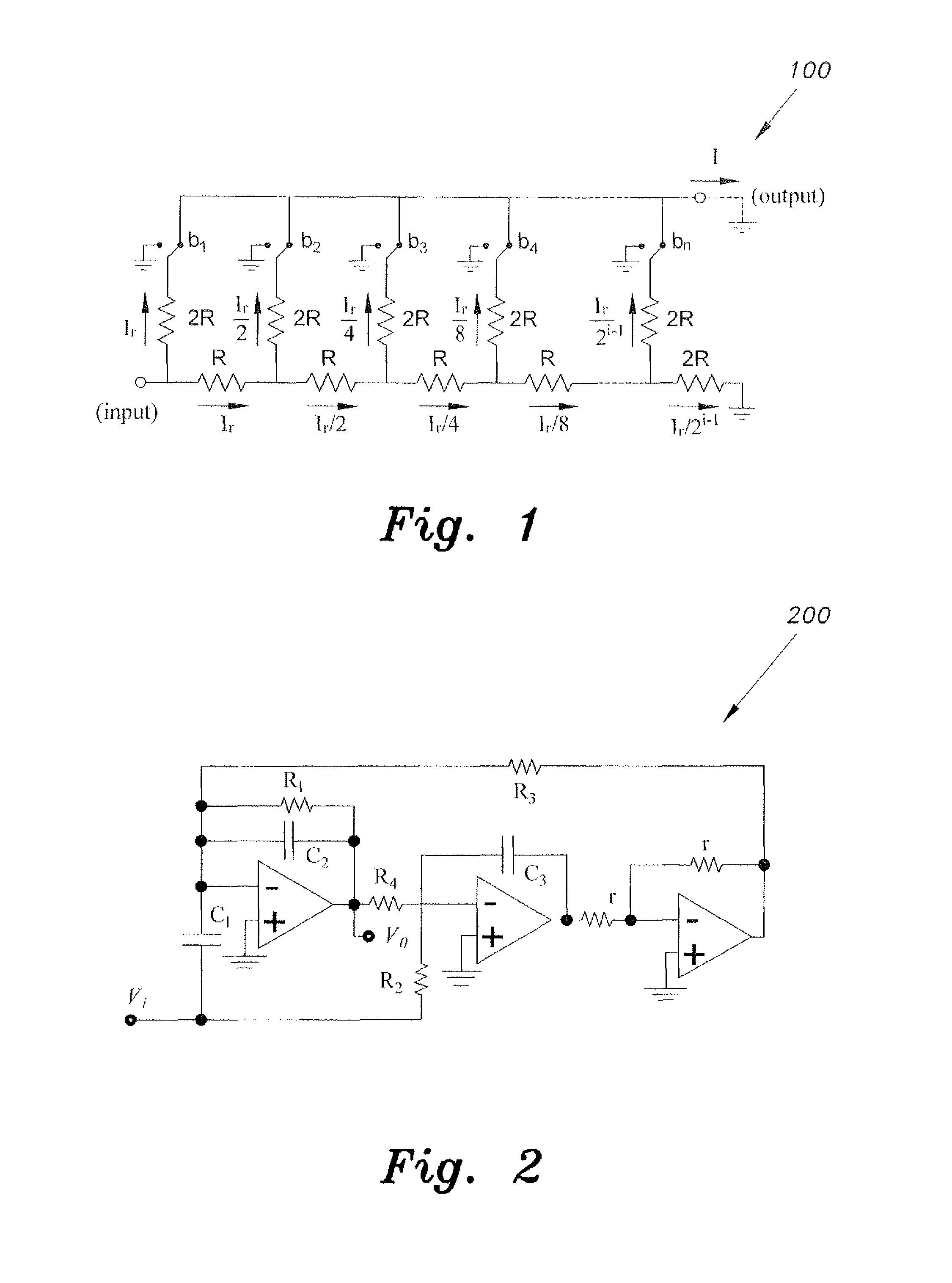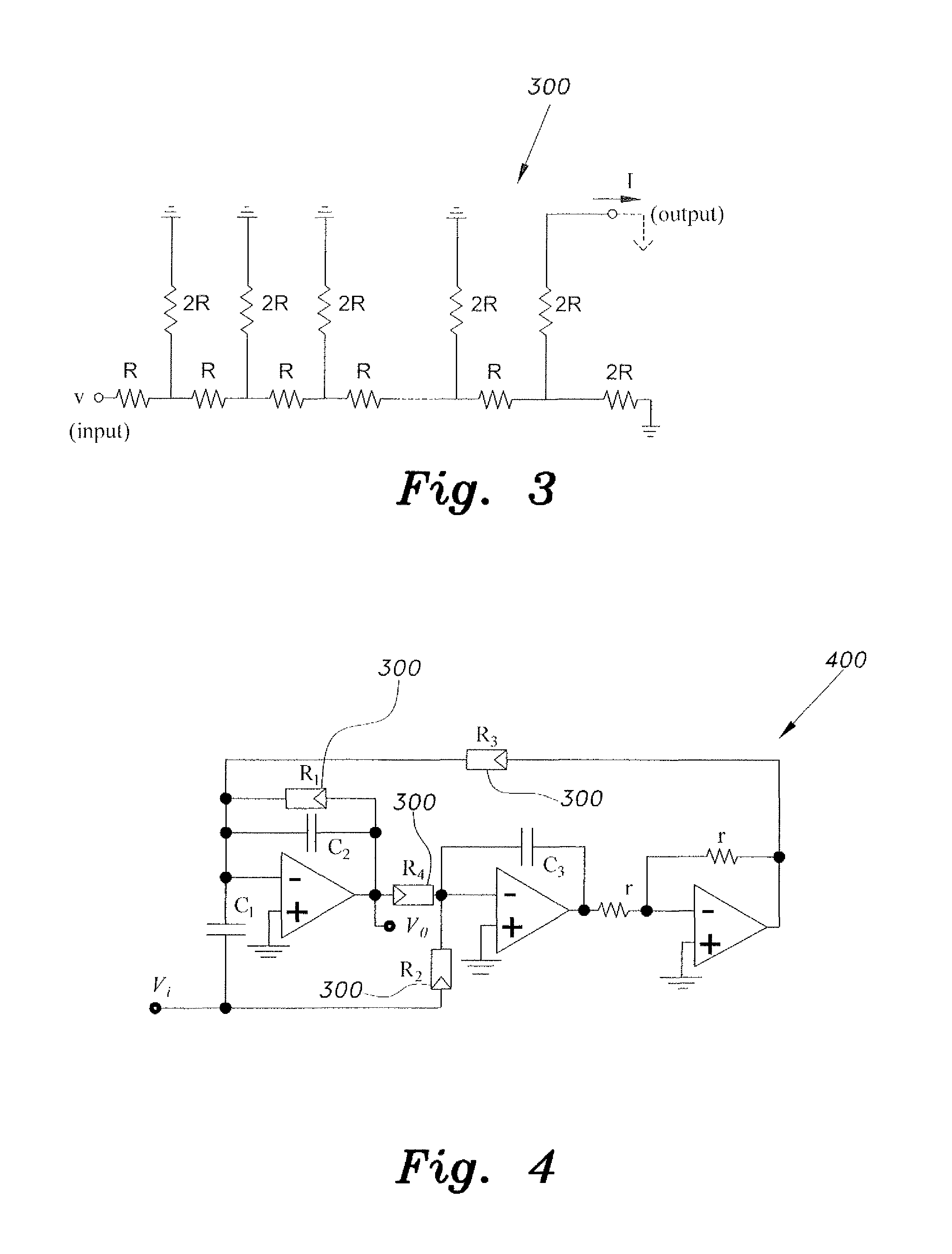Low frequency notch filter integrated circuit
a low-frequency notch filter and integrated circuit technology, applied in the direction of impedence networks, pulse manipulation, electrical apparatus, etc., can solve the problems of line frequency interference, power line interference is the most common problem, impractical implementation on the integrated circuit chip, etc., to promote the utilization of very large-scale integration techniques, small silicon area, and high linearity
- Summary
- Abstract
- Description
- Claims
- Application Information
AI Technical Summary
Benefits of technology
Problems solved by technology
Method used
Image
Examples
Embodiment Construction
[0016]The low frequency notch filter integrated circuit is implemented in a relatively small silicon area and with high linearity, thereby promoting the utilization of very large-scale integration (VLSI) techniques in biomedical instrumentation. The filter circuit utilizes R-2R ladders, providing an area saving of approximately 120:1. An exemplary R-2R ladder circuit 100 is shown in FIG. 1. R-2R ladders function as digitally programmable resistors in a biquad configured Operational Amplifier (op amp) filter circuit. Integrator loop topologies are used in the filter circuit. The preferred topology utilizes a Tow-Thomas circuit, which can be designed for the prerequisite gain and Q independently selecting two resistors. An exemplary Tow-Thomas circuit 200 is shown in FIG. 2. In addition, the three op amps in the Tow-Thomas topology have their non-inverting input (denoted by the “+” sign in the drawings) grounded, and therefore their inverting inputs (designated by the “−” sign in the ...
PUM
 Login to View More
Login to View More Abstract
Description
Claims
Application Information
 Login to View More
Login to View More - R&D
- Intellectual Property
- Life Sciences
- Materials
- Tech Scout
- Unparalleled Data Quality
- Higher Quality Content
- 60% Fewer Hallucinations
Browse by: Latest US Patents, China's latest patents, Technical Efficacy Thesaurus, Application Domain, Technology Topic, Popular Technical Reports.
© 2025 PatSnap. All rights reserved.Legal|Privacy policy|Modern Slavery Act Transparency Statement|Sitemap|About US| Contact US: help@patsnap.com



